Your Health
WALK FARTHER, FASTER AND PAIN-FREE
These simple tweaks will add energy and power to your stride, so you can get where you’re going with ease
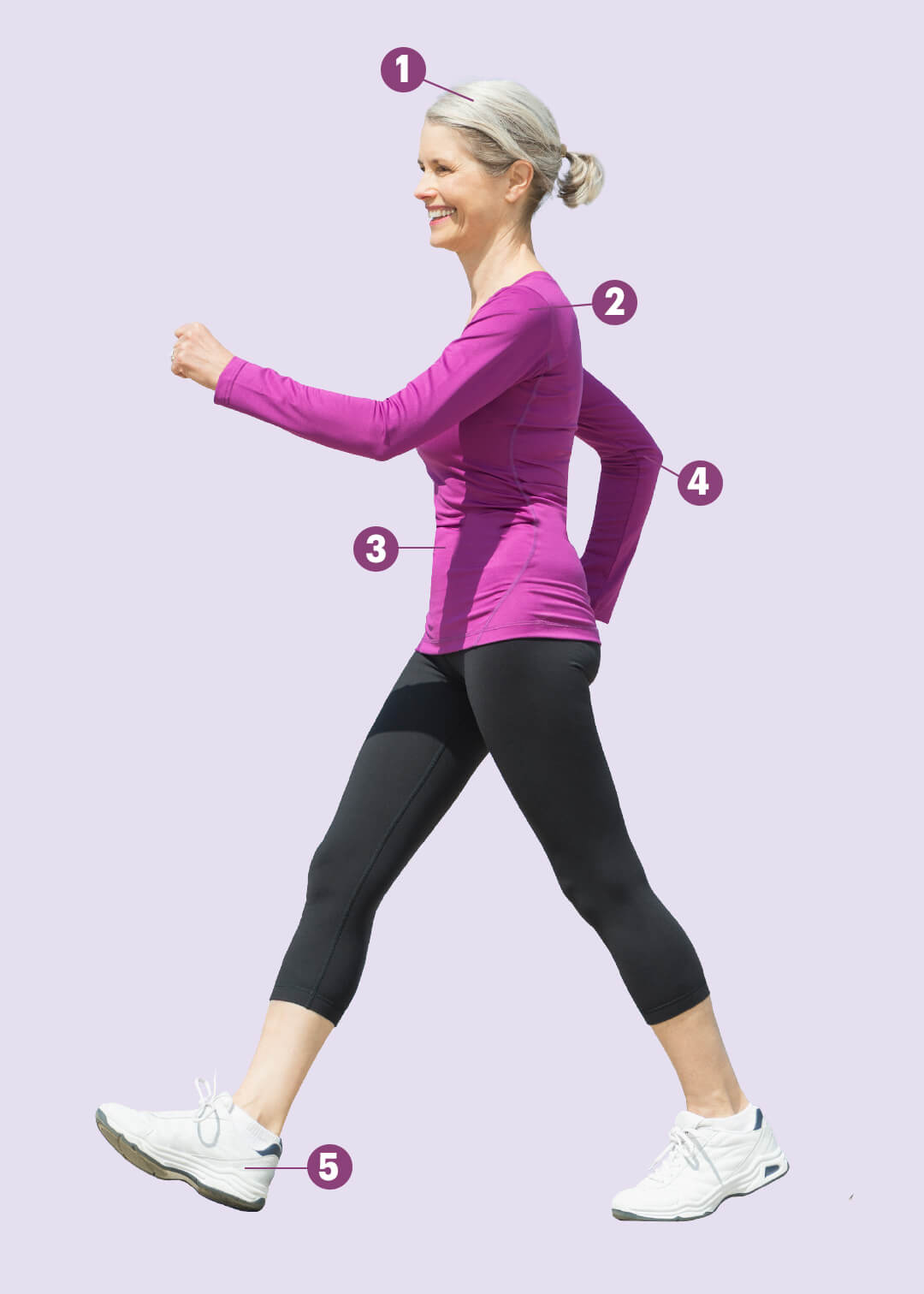
You already know that walking burns calories, boosts stamina, improves heart health, reduces stress and lowers inflammation—and that the more you can do it, the better.
But sometimes walking is a pain in the butt … and the legs, the back and the feet. But with a few tweaks to your posture and stride, you can walk stronger, longer and without pain.
“Maintaining the best posture possible allows your body to distribute its weight more evenly and move more efficiently. That keeps muscles pain-free by preventing them from becoming overstressed and overworked,” says Mike Mancias, longtime personal athletic trainer to LeBron James and author of Game Plan. “Better still, watching your form can also allow your lungs to expand further and take in more energy-rich oxygen, so you’re less likely to fatigue as quickly.” Here’s his head-to-toe (literally!) checklist on how to step up your game the next time you take a stroll.

1. HEAD: Tilting your head down causes your shoulders to roll forward, preventing you from breathing as deeply as possible. “Remember, oxygen equals energy!” Mancias says. Instead, look straight ahead (about 10 feet or so in front of you) with your chin lifted. Try to keep your ears in line with your shoulders, which will prevent you from leaning too far backward or forward.
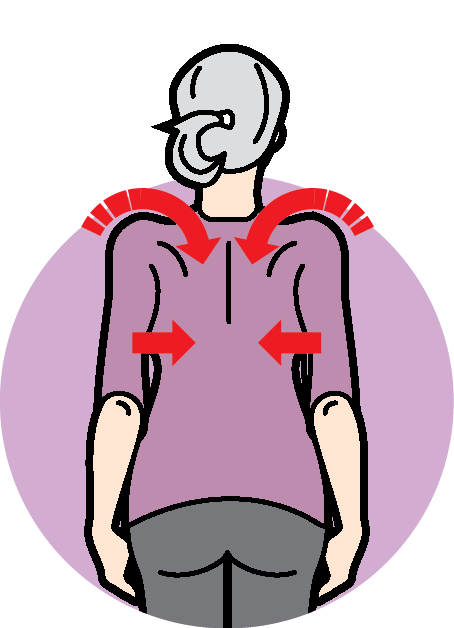
2. SHOULDERS: Gently roll your shoulders upward, then back, then down—and keep them there. You want your shoulder blades to nearly touch each other at the middle of your back. This prevents slouching and reduces tension on the upper back and neck.

3. CORE: To pull in your belly and support your spine, gently squeeze your abdominal muscles—and keep them that way when walking. “Think about using your stomach muscles to pull your belly button toward your spine,” Mancias says. “This trick removes stress from your lower back by keeping your body weight centered and provides more stability, so you’re less likely to lose your balance.”
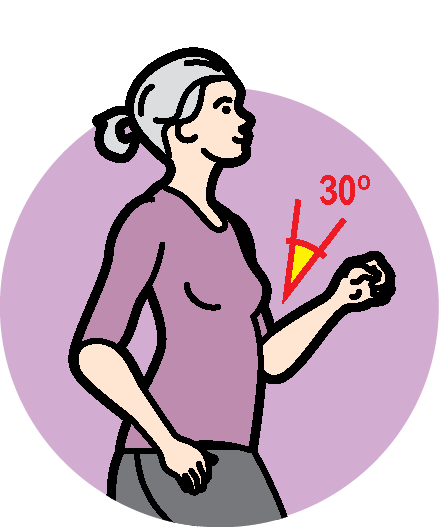
4. ARMS: “Keep your arms bent at 30- to 40-degree angles and close to your rib cage; swing them forward and backward in a motion that’s in line with your body,” Mancias says. Moving them at an angle across your body not only wastes energy, but it can affect your steadiness, he explains.
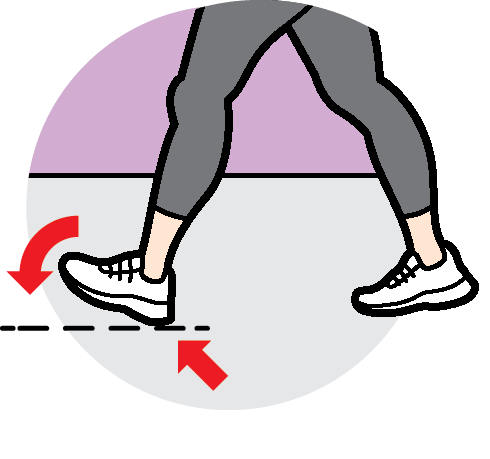
5. FEET: Your heels are meant to absorb the shock of each step as you stride. With every step, land on your heel, roll forward onto the ball of your foot, then push off with your toes. “This three-part motion leaves your legs and feet feeling less tired and can help to minimize blisters,” Mancias says.
Journalist Myatt Murphy has written nearly two dozen books on health and fitness.
STOP THE WADDLE
Hip pain can make walking so uncomfortable that we start to alter our gait by waddling. To build strength and flexibility in the hips, try this.
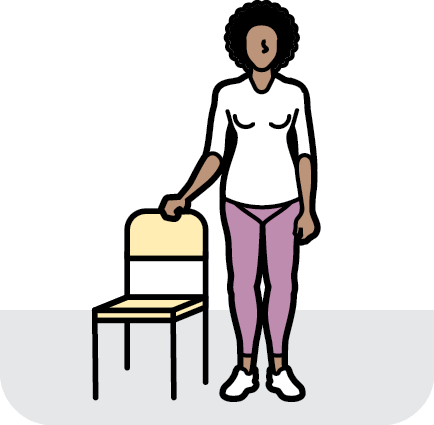
1. Stand with a sturdy chair at your right. Rest your right hand on the chair for support.

2. Face forward and make sure your toes are pointed forward as well.
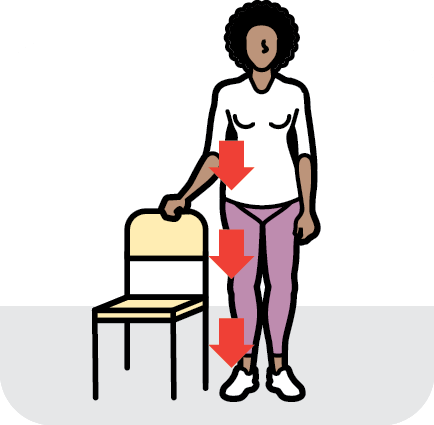
3. Shift your weight onto your right foot. Make sure you’re steady and balanced.
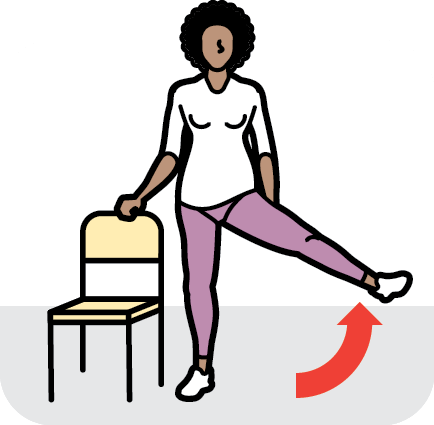
4. Slowly lift your left leg out to the side as far as you can, hold a moment, and return.
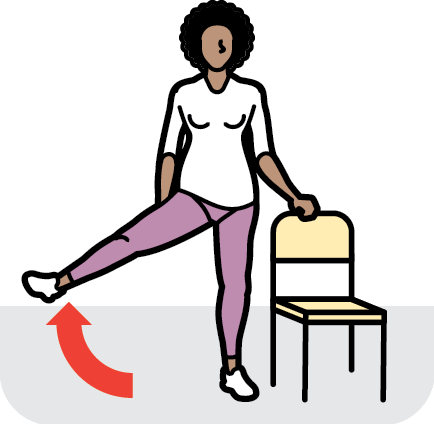
5. Perform 10 lifts, then move to the other side of the chair and repeat with your right leg.